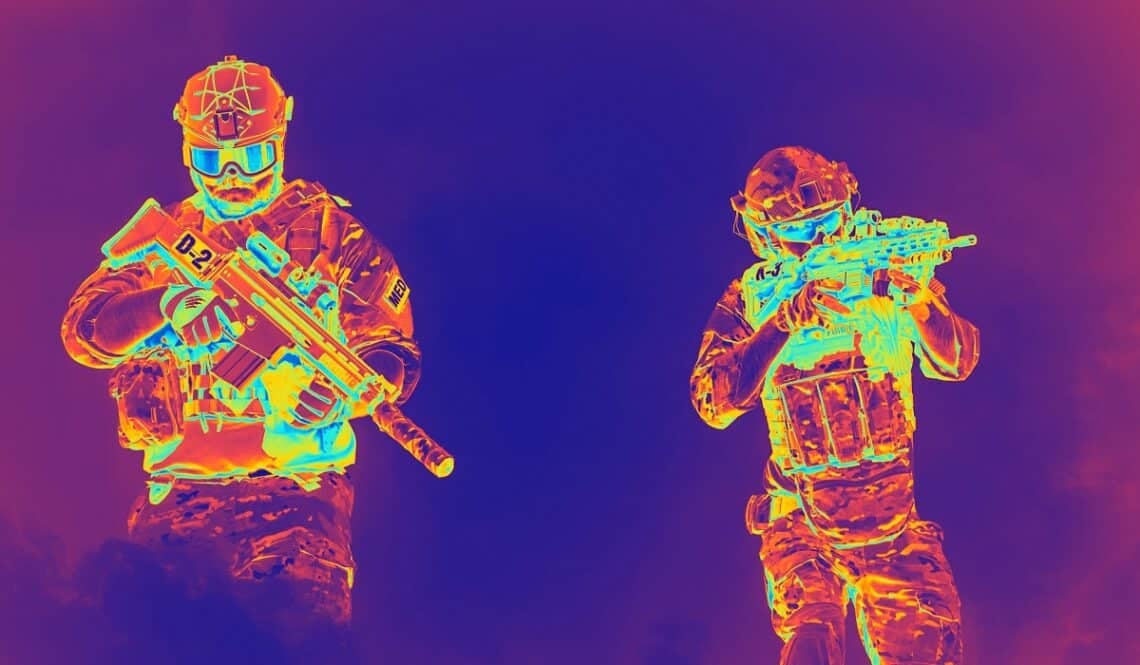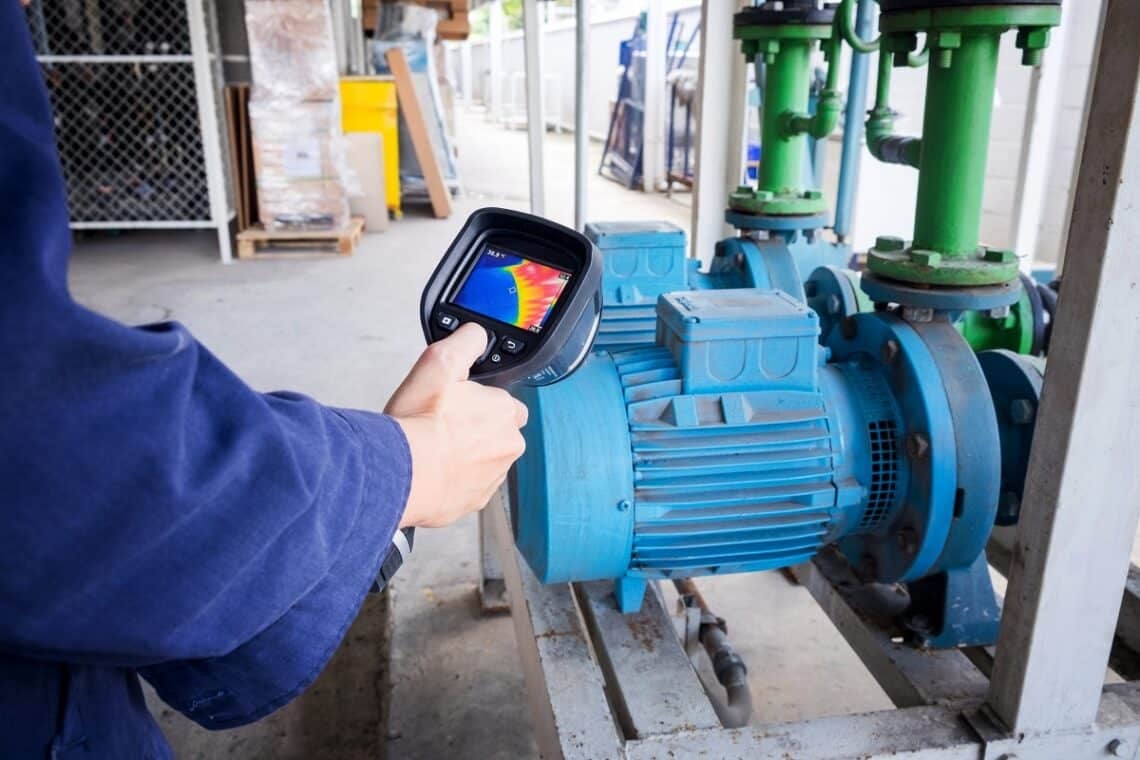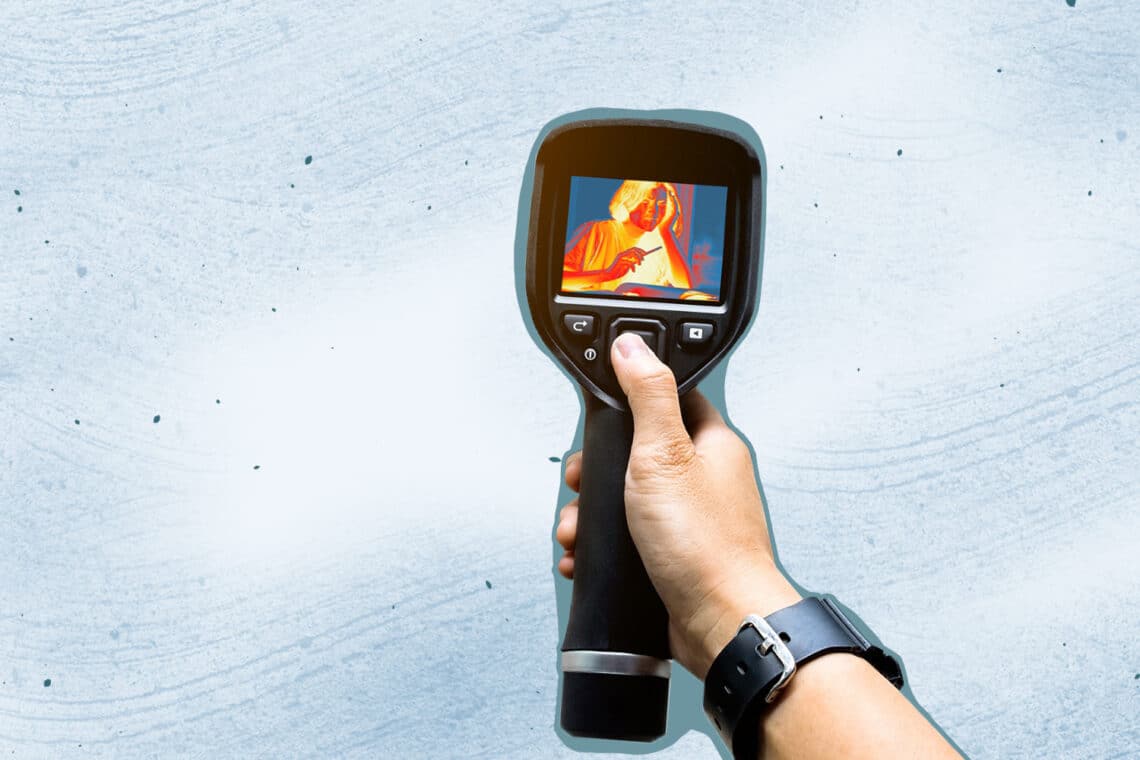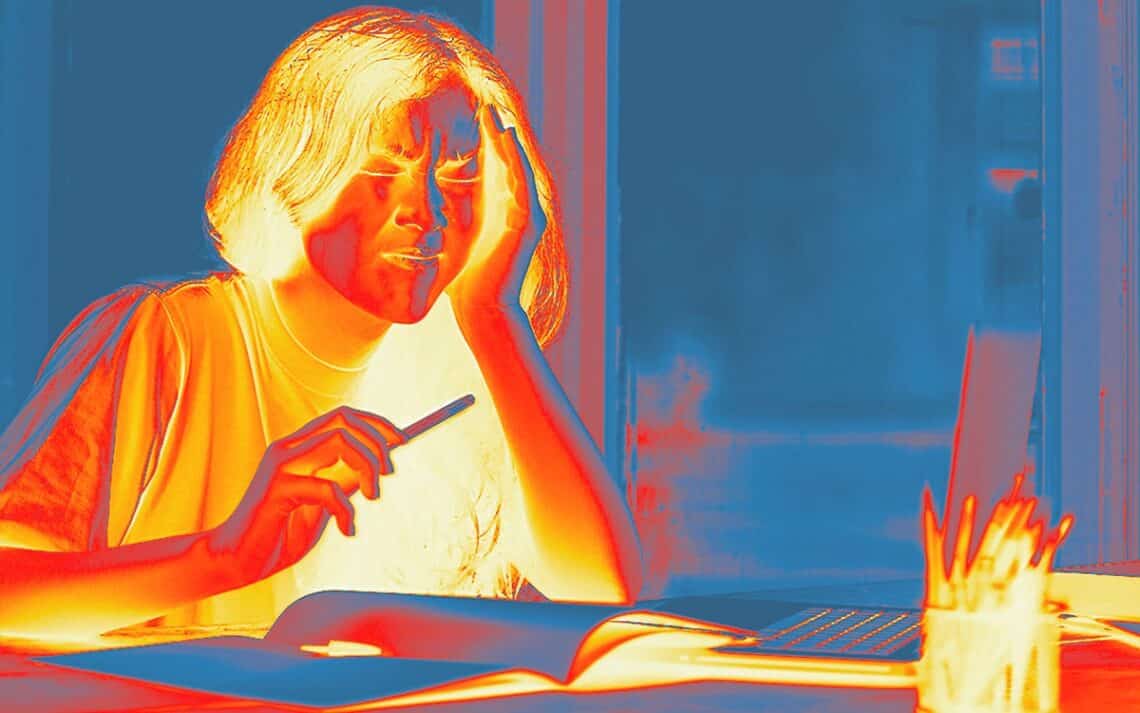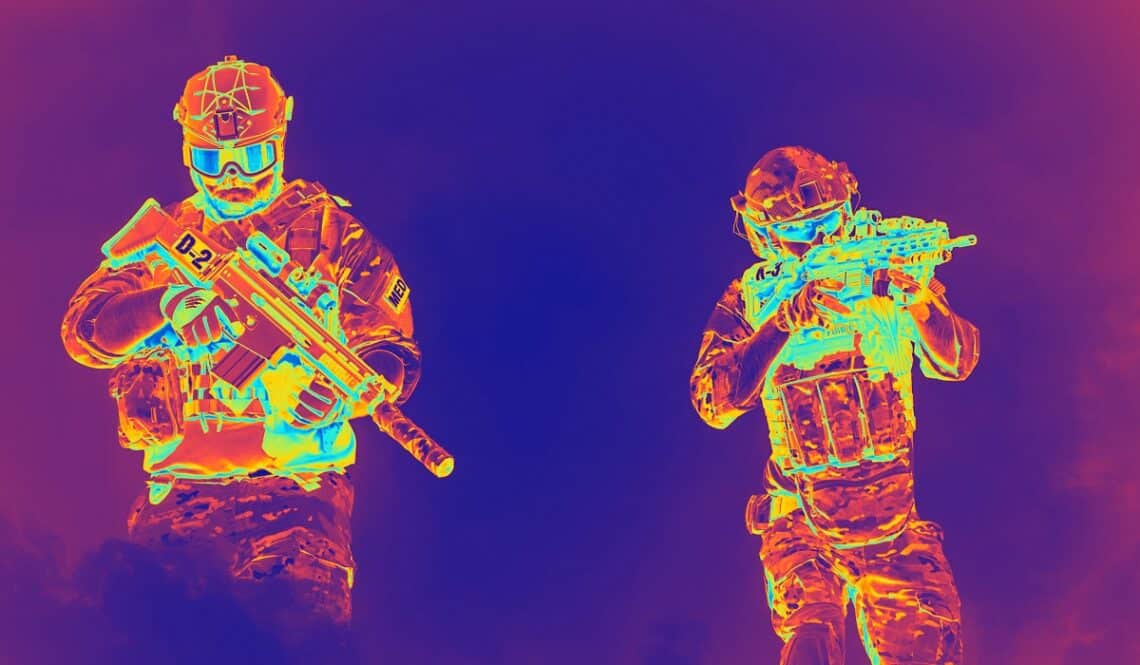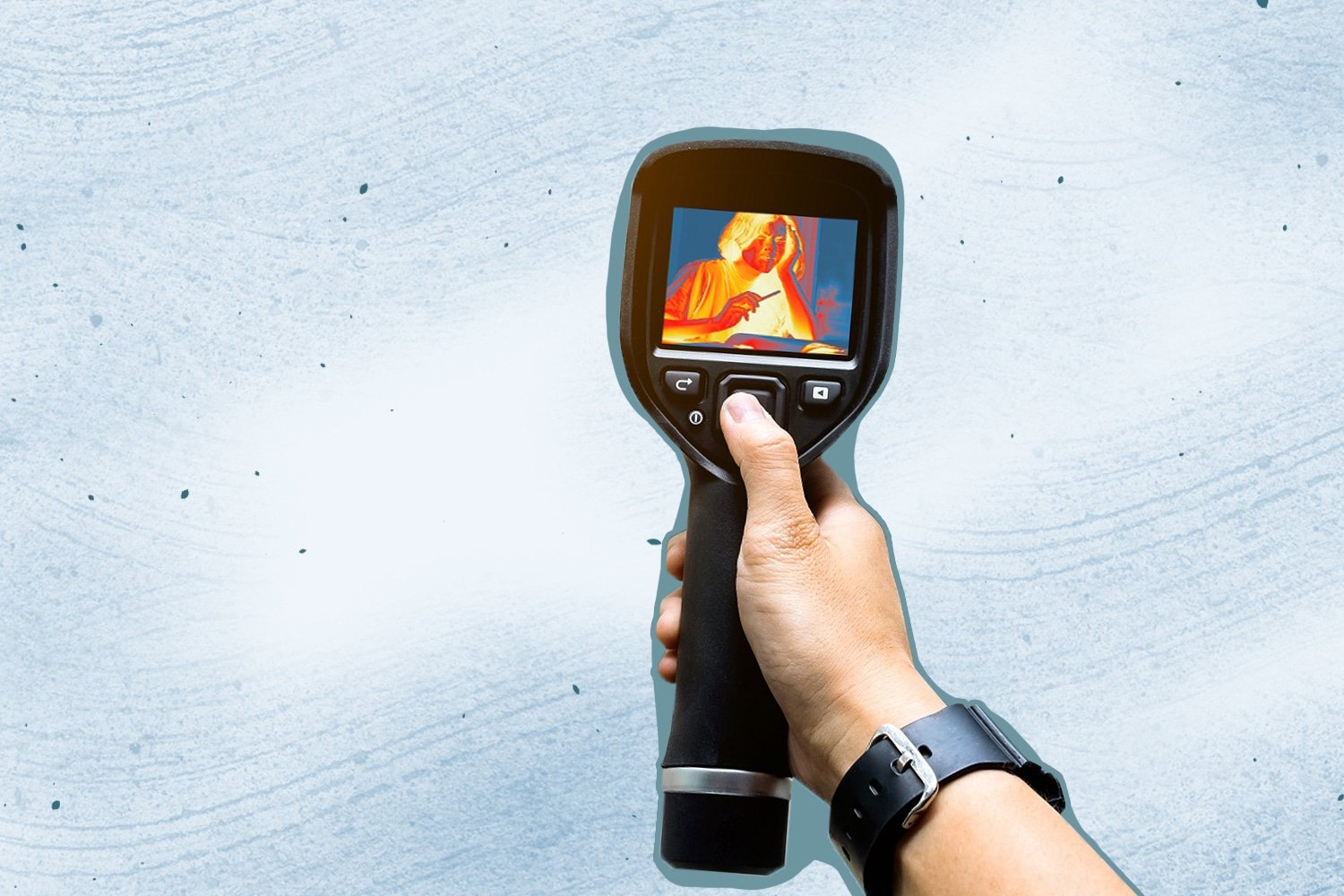Infrared thermography dates back to the 1600s when Sir Isaac Newton discovered white light is a combination of different colors. Later, Frederick William Herschel’s discovery of invisible infrared light in 1800, paved the way for the modern thermal imaging camera.
Tracking down the emitted heat energy of an object is how thermal imaging cameras work, and they are better than night vision devices. Since thermal cameras track the heat radiation of objects in infrared wavelengths, they don’t require external light to operate.
They’ve found wide applications in different industries due to their ability to detect objects under low visibility conditions. So, read on to learn more about the history of thermal imaging.
What Is Thermal Imaging Or Thermography?

In layman’s terms, thermal imaging allows you to visualize a living or non-living object based on its heat radiation.
Thermal imaging or infrared cameras usually record the temperatures of different objects caught in the frame and assign various colors to each temperature. This way, you can compare the heat or infrared radiation of the target object with its surrounding objects.
In modern thermal imaging, a thermal camera often shows colder temperatures in purple, blue, or green colors. On the other hand, warmer temperatures are designated with orange, red, or yellow colors.
In a thermal image, a person will appear in the shades of red, yellow, or orange, while their surrounding inanimate objects usually appear in purple and blue. It indicates that the person is showing more thermal radiation compared to their surrounding areas. Some thermal cameras also use a grayscale, such as police cameras, to correctly identify a suspect.
History Of Thermal Imaging
The scientific basis of thermal imaging lies in identifying the infrared spectrum of light, which is invisible to the naked eye. It was Sir Isaac Newton who first discovered in 1666 that the apparently white light of the sun were actually not white but were a combination of several different colors.
Later in 1800, Frederick William Herschel studied the individual colors of the light spectrum by the refraction of sunlight through a special glass prism. Even though Herschel measured the temperature and heat radiation of each color, he couldn’t arithmetically determine the total temperature of sunlight.
Herschel used a red optical filter material producing heat to measure the thermal radiation of light beyond the visible spectrum. He positioned a sensitive thermometer just beyond the visible red light spectrum. Herschel noticed that the thermometer temperature was higher than the ambient temperature of the surrounding air.
Based on his experiments, Herschel concluded there must be another form of light wave invisible to the naked eye. He called it the “invisible rays,” eventually identified as infrared wavelengths.
Furthermore, in 1821, Thomas Johann Seebeck discovered the effect of electromotive force in the production of electricity due to the impact of heat generated from the light spectrum. This discovery of the thermoelectric effect led to the invention of the bolometer by Samuel Langley in 1878. The bolometer was a highly sensitive heat detector, which could detect temperature variations of 32-degree Fahrenheit.
Microbolometer technology was a giant leap toward the development of thermal imaging and infrared thermography. This thermal imaging device had two thin metal strips, a power supply, a measuring bridge, and a galvanometer to measure the electric current. Using the bolometer, it became possible to study the infrared rays in the sunlight’s invisible spectrum and measure the intensity of heat radiation in different wavelengths.
How Was The First Thermal Imaging Camera Invented?
The first industrial application of infrared (IR) technology dates back to 1913, when an infrared device was used to detect steamships and icebergs using a thermopile and a mirror. However, the first accurate infrared iceberg detector without a thermopile was patented by R.D. Parker in 1914.
It was soon followed by a proposal from G.A. Baker in 1934 to apply the infrared imaging system in detecting forest fires. Moreover, in 1929, Kálmán Tihanyi invented the first infrared-sensitive electronic television camera (night vision) for the British anti-craft defense.
In America, an infrared line scanner was the first thermographic camera created by Texas Instruments and the US military in 1947, which produced line images. However, it took around 1 hour to produce a single infrared image using this IR device when it was originally developed.
Several new approaches were developed to improve thermal imaging technologies to create more accurate infrared images. For instance, the AGA Company was successful in commercializing infrared image scanning by using a cooled photoconductor.
Honeywell developed vanadium oxide IR detectors, which could cool down at lower temperatures and scan images mechanically. The introduction of the electronic scanning system was a breakthrough in high-density array development.
Then again in 1969, Michael Francis Tompsett proposed the concept of arrays of solid-state thermal imagers that led to the development of modern thermal imagers based on hybridized single-crystal-slice imaging.
How Were Infrared Sensors Invented Using Thermal Imaging Technology?
One of the many industrial applications of modern thermal imaging systems includes intelligent evaluation of an infrared radiation signal to detect threats. That’s why smart IR sensors were invented for sensitive military applications under the US Strategic Defense Initiative. These sensors were designed to integrate signal extraction, thermal image sensing, processing, as well as comprehension.
There are two types of infrared sensor technologies. The first one is similar to a “vision chip” and is used within the visible electromagnetic spectrum range. These basic detectors led to preprocessing through the application of smart sensing techniques while the second technology has specific applications and also uses its structure and design for preprocessing.
Infrared thermal technology found its way to civilian use alongside practical military applications during the end of the 1990s. The groundbreaking development in the technologies of thermal imaging cameras and infrared sensors led to military and civilian uses as their costs decreased significantly.
Some of the modern applications of IR sensors and thermal imaging include medical diagnostics, art or build analysis, environmental control, and car guidance systems. You’ll learn more about the current applications of thermal imaging and IR sensors in the following sections.
How Does Thermal Imaging Work?
Before we discuss in detail the current applications of thermal imaging, it’s crucial for you to understand how does a thermal camera work. The simple explanation is thermal or infrared cameras measure temperature by capturing and detecting different levels of reflected light in the infrared spectrum.
All objects emit infrared radiation to transfer heat. If you put your hands over some burning coals in a grill, they’ll emit more infrared radiation to transfer heat to the hands.
Even though infrared light is invisible, it is possible to detect the light’s heating effect under high intensity. So, an infrared camera essentially measures the temperature fluctuations caused due to electromagnetic radiation of infrared light.
Thermal Imaging Cameras Vs Night Vision Devices
The fundamental difference between thermal imaging cameras or FLIR systems and night vision devices (NVDs) is how they operate. While NVDs work like ordinary cameras and require a light source to operate, there’s no resemblance between thermal imagers and regular cameras.
FLIR systems make infrared images based on the thermal energy emitted from each object and have no relation with visible light. In contrast, since night vision cameras can see visible light, they can’t visualize thermal energy. Thermal imaging cameras can not only detect heat but can also measure heat differences as tiny as 32-degree Fahrenheit.
Since different objects absorb and emit thermal energy or heat at different rates, the intensities of heat signatures also differ significantly. Modern FLIR thermal cameras can detect such temperature differences and designate different colors to these heat sources while creating thermal images.
Night vision technology uses small amounts of visible light and magnifies it significantly to project it on display. So, any NVD offers the same limitations as the naked eye because if there isn’t sufficient visible light, the night vision technology won’t work well. Thermal imaging cameras are always a better option for taking clear images under low light conditions.
However, it’s easier to recognize an object using NVDs because it appears as it is, and images are much more natural. But thermal cameras produce images based on the electromagnetic radiation of an object, which makes it difficult to determine the natural image based on its heat signature. Moreover, NVDs are much more affordable than thermal imaging cameras.
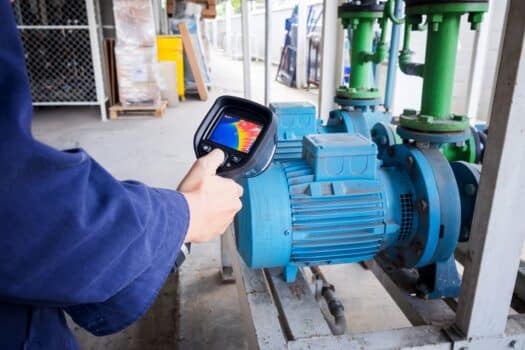
Current Applications Of Thermal Imaging Systems
1. Electrical Maintenance
Since thermal imaging helps detect temperature fluctuations due to the heat emitted from different objects, it has extensive applications in electrical maintenance. For instance, licensed electricians and power line technicians apply thermal imaging to precisely detect and pinpoint electrical parts and joints facing risks of overheating.
Thermal imaging technology further determines whether an electrical part is emitting more heat than other sections to prevent overheating. Moreover, it can locate loose connections in the electrical circuits or devices by detecting the high heat emitted by faulty electrical wires or appliances.
2. Plumbing
Water and even ice radiate heat, and professional plumbers often use thermal imaging to detect possible water leaks or frozen pipes in residential and commercial plumbing systems. Thermal cameras make it easier to detect water leaks inside walls or other areas that aren’t easily visible.
Since plumbers can use thermal imaging cameras to detect heat radiations from a distance, these devices help detect plumbing problems in areas that are hard to reach. On top of this, using thermal cameras allows plumbers to avoid going near dangerous areas that threaten their health and safety.
3. Building Construction
Build construction engineers and technicians frequently working with thermal insulation, apply thermal imaging to detect leaks and regulate the temperature inside a building efficiently. Using thermal imaging cameras, they can quickly analyze the building’s entire structure to spot faults.
Heat loss from doors, windows, HVAC equipment, and surrounding walls is a common issue with thermal regulation in a building. Technicians can successfully catch these performance issues by using thermal imaging cameras.
4. Animal And Pest Management
Applications of thermal imaging or infrared cameras are extremely useful in the animal and pest management industry. Rodents and insects are quite good at finding hiding spots to build nests in the nooks and crevices of a house. So, infrared cameras can be ideal for detecting their breeding grounds from a safe distance.
Professionals don’t need to climb up the roof or crawl under the staircase if they have a thermal camera. And it becomes much easier to detect termite infestations in a non-intrusive manner with thermal imaging. Similarly, thermal imaging is widely used in conducting wildlife surveys in a non-invasive manner in their natural habitat.
5. Transport Navigation
Thermal imaging works wonders when it comes to transport navigation, especially if you’re traveling at night. Maritime navigation always uses thermal imaging to detect other vessels, obstructions, and people while sailing out in the sea during the night.
It also helps in accurate object detection and offers a huge advantage for bus drivers, long-haul truckers, or any driver who spends a lot of time on the road. This is because thermal cameras can help detect pedestrians or animals even under challenging driving conditions, such as glare, fog, or total darkness.
Cadillac was the first automobile company to introduce infrared cameras in its 2000 Deville model. However, the brand had to discontinue its production in 2004 because of low orders.
Since the technology has become a lot cheaper in the past few years, more and more companies have started providing thermal imaging devices. In fact, leading automobile manufacturers, such as Audi, Mercedes, Toyota, and BMW, install thermal imaging systems in their vehicles.
6. Healthcare And Medicine
Thermal imaging has practical applications in medicine and healthcare to detect temperature anomalies and fevers in patients. It also becomes easier to accurately scan the temperatures of passengers in airports and even help diagnose several medical conditions associated with circulatory problems.
7. Firefighting
Firefighters often use thermal imaging to identify the location of victims through heavy smoke, during rescue operations in dangerous environments. Thermal cameras further detect spot fires, so firefighters can prevent them from spreading.
8. Law Enforcement
Law enforcement agencies and police departments incorporate thermal technology in their surveillance systems to locate suspects at night, investigate crime scenes, and carry out search and rescue operations. Suspects might think about how to trick a thermal imaging camera, but since these cameras work better than NVDs, they are widely used in tactical missions.
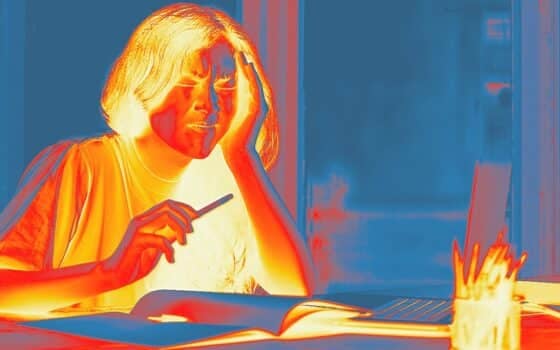
When Was Thermal Vision Invented Final Thoughts
With the tremendous development of thermal technology, infrared cameras have found civilian applications alongside their military uses. In fact, the prices of thermal imaging systems have dropped considerably over the past few years, making it easier for civilians to use them for safety and security purposes.
The applications of thermal technology in law enforcement and the automotive industry have led to impressive results. With infrared imaging, it has become easier to track suspects at night and investigate potential crime scenes.
Furthermore, accurate object detection through infrared imaging under adverse conditions, such as fog, storms, rainfall, and darkness, has lowered the chances of accidents while driving. Even though it’s still not possible to develop natural, still images using modern thermal technology, we’ve come a long way from the age-old microbolometer technologies.
It’s safe to assume that in the coming years, it might be possible to develop clear, still images using infrared cameras if the technology continues to grow and evolve consistently.



